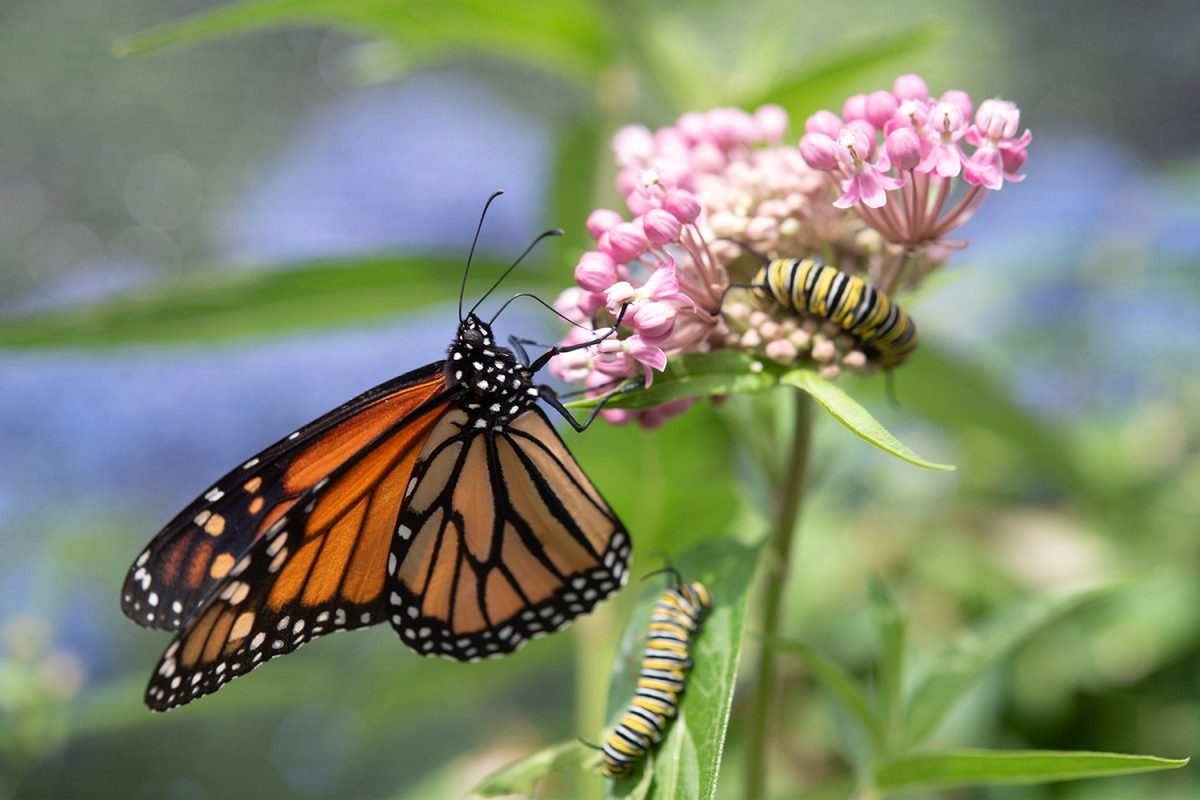Across the U.S., monarch and pollinator populations have been steadily decreasing for several decades.
In a study recently published by Science magazine, researchers discovered that from 2000 to 2020, the total number of butterflies fell by 22 percent across over 550 recorded species.
This decline in butterflies can extend from a variety of issues, such as habitat loss, climate change, and the use of herbicides and insecticides for farming and gardening.
However, a report released by the World Wildlife Fund announced that the eastern monarch butterfly population has almost doubled this year.
Many of the eastern monarch butterflies migrate from the U.S. down to Mexico, with better weather conditions and less severe drought along the route aiding in the population growth.
Despite this improvement, other challenges prevent the protection and conservation of monarchs and pollinators — even right here in Iowa, a state with a prominent population of both.
An estimated 38 percent of monarchs that migrate to Mexico are originally from the upper Midwest, which includes Iowa, according to the Iowa Department of Natural Resources.
The Iowa Department of Natural Resources also stated, “no comprehensive population estimate of Monarchs exists for Iowa, but we have been recording them as part of wider butterfly surveys across the state.”
Recently, the Iowa Learning Farms and the Iowa Monarch Conservation Consortium teamed up to host several habitat workshops in Ames, Coralville, Fairfield, and Storm Lake to begin spreading awareness of the importance of monarchs and pollinators to the ecosystem.
Both organizations spend time educating different communities throughout the state while performing a variety of tasks, such as conservation, research, and outreach.
The workshops then allowed community members to discuss monarchs and pollinators and learn about Iowans’ thoughts and opinions on those subjects.
Mykayla Hagaman, a program specialist at the Iowa Monarch Conservation Consortium, said butterflies are crucial for Iowa’s ecosystem and agriculture, especially with one-third of global food production dependent on pollinators.
“[Pollinators] provide a lot of really important pollination services to agricultural crops, and then they also pollinate a lot of our native plants and our native trees,” Hagaman said. “They provide a lot of really important pollination services, and the habitat that they rely on for food can also provide other ecosystem services that are really important here in Iowa as well, such as increasing water quality, decreasing erosion, and nutrient runoff.”
Hagaman said the workshops were well-received and allowed for an interactive discussion with community members while also highlighting ways to increase monarch and pollinator populations.
She said one of the main ways people can help protect monarchs is through voluntary conservation efforts, which is when individual people decide to establish monarch and pollinator habitats on their lands.
The workshops then aid those individuals by educating them on how to establish habitats, what plants to select, and when to plant.
“Educating people — providing that information so there are less barriers to voluntary conservation efforts — is really great,” Hagaman said.
Program Director at the Iowa Learning Farms Jacqueline Comito said there are several main goals of helping monarchs and pollinators.
These include creating habitats for monarchs by planting milkweed, establishing pollinator-friendly spaces in farmland and urban areas, and supporting conservation efforts to protect monarch breeding grounds.
“We thought maybe it’d be really great to go out there and talk to people about monarchs and milkweed and see what it is they understood, what they didn’t understand, and how we could maybe convince them that getting more habitat out there would be a good thing,” Comito said. “This project is about doing that — getting out there, talking to people, and more importantly, listening to people.”
Comito said the Iowa Learning Farms plays a role in the conservation efforts by conducting Rapid Needs Assessment and Response Workshops, engaging communities through interactive group discussions, and developing educational programs to increase awareness.
It also collaborates with multiple state and federal organizations, such as the Iowa Natural Resources Conservation Service, the Iowa Department of Agriculture and Land Stewardship, Conservation Districts of Iowa, and more.
As the final workshop for this season wrapped up last week, Comito said the insights gained will help in creating better outreach to increase habitat and pollinator numbers in Iowa.
Stephanie Shepherd, a wildlife diversity biologist, said pollinators are crucial to Iowa’s ecosystems, and habitat creation and preservation are also key conservation strategies.
“Pollinators are crucial to keeping most of our plant life from going away. They provide pollination services between plants, so most of our national ecosystems are completely dependent on them,” Shepherd said.
Shepherd said community members can get involved in a variety of ways as well, such as planting flowering shrubs and bushes and limiting the use of chemicals.
Community members can also join a number of science programs across the country that track species, such as the Monarch Joint Venture or the Bumblebee Watch. The Xerces Society also trains volunteers to identify and survey for bumblebees around the state.
In the future, Shepherd said she and others will continue to advocate for the conservation of monarchs and pollinators.
“Much of the challenges has been habitat loss over time that has happened over the last 200 years and added up to decrease the amount of habitat that’s available, and we’re continuing to lose that habitat for those species,” Shepherd said. “We’ll continue to build and create more habitat.”



